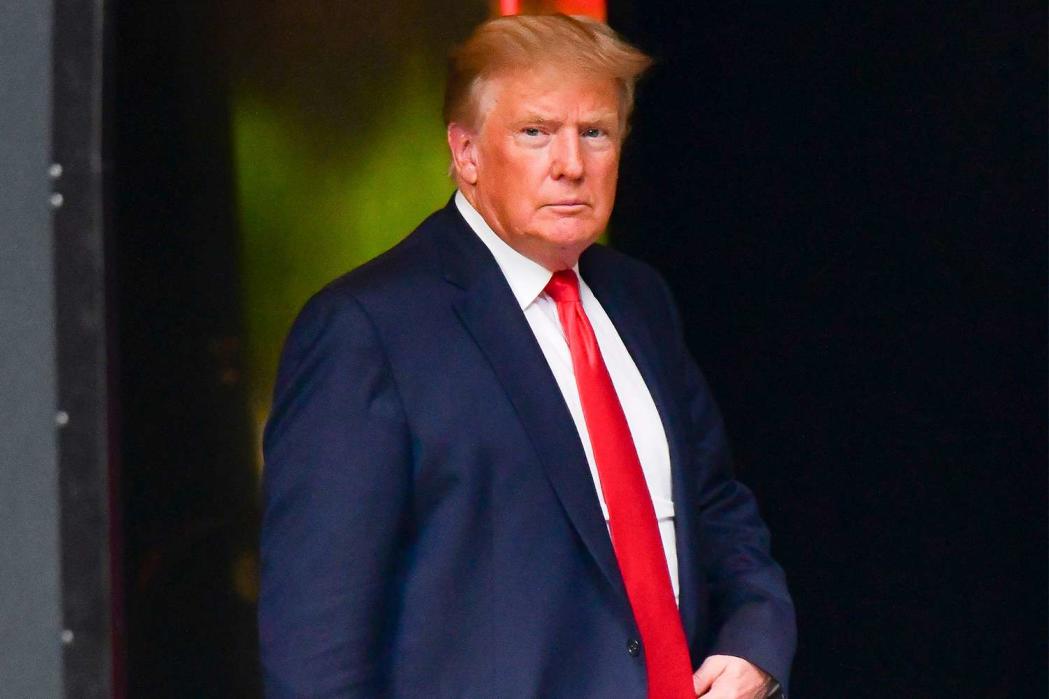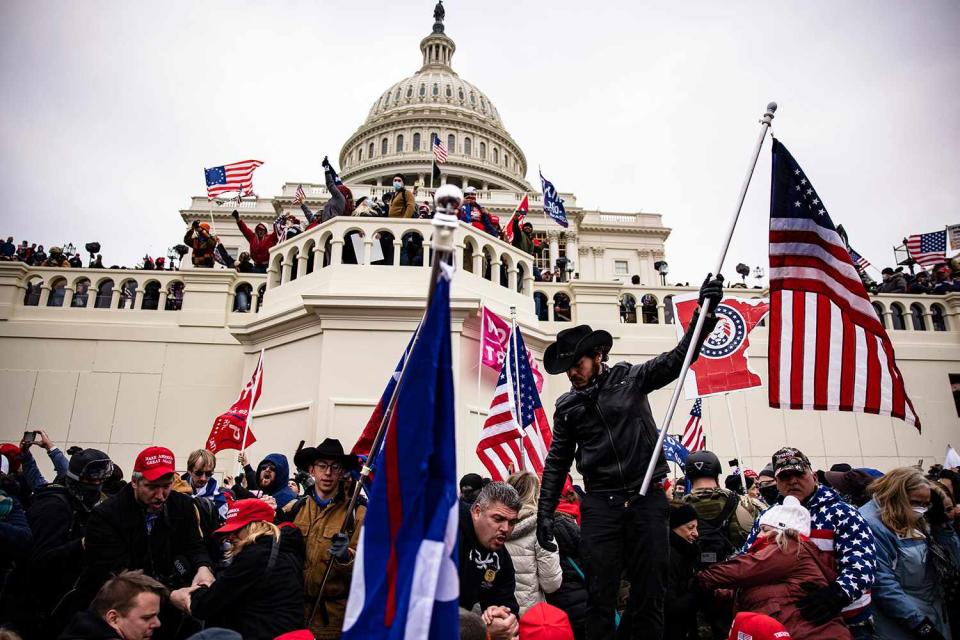Trump Says He'd Consider 'Full Pardons' of Capitol Rioters as President, Is Supporting Some Financially

- Oops!Something went wrong.Please try again later.
James Devaney/GC Images Donald Trump
While those involved in the Jan. 6, 2021 attack on the U.S. Capitol have been widely denounced by politicians on either side of the aisle, as well as condemned by the American justice system, Donald Trump says he would considering pardoning them if elected again. What's more, the former president said this week he is financially supporting some of the rioters.
Roughly 850 people have been arrested for crimes related to the 2021 attack. More than 250 of those have been charged with assaulting or impeding law enforcement.
Speaking to radio host Wendy Bell, Trump said that if he runs for president in 2024 and wins, he will "be looking very, very strongly about pardons, full pardons."
Reuters reports that elsewhere in the interview, Trump — who has previously declared himself "the president of law and order" — said he is "financially supporting" some of the rioters facing legal consequences due to their involvement, though he did not offer specifics.
"I am financially supporting people that are incredible and they were in my office actually two days ago. It's very much on my mind. It's a disgrace what they've done to them," he said.
RELATED: Capitol Police Officer Testifies About the 'Carnage' of Jan. 6: 'I Was Slipping in People's Blood'
Trump's support for those who broke into the Capitol that day comes as a U.S. House Committee continues investigating the events that lead up to and occurred that day.
Before the rioting broke out, President Trump had publicly pressured his own vice president, Mike Pence, to somehow use his position to overturn the 2020 election results when Congress met to ratify Joe Biden's victory on Jan. 6.

Samuel Corum/Getty Rioters at the U.S. Capitol on Jan. 6, 2021
Speaking at a rally held shortly before the rally at the Capitol turned violent, Trump encouraged his supporters to march to where Congress had convened. Though he said they should be peaceful, he also said they needed to "fight like hell" and risked losing their country.
Some of Trump's supporters, seemingly emboldened by the former president's cries to "show strength," soon overtook the building, forcing the evacuation of lawmakers inside. The scene turned ugly, with footage aired during the Jan. 6 committee hearings showing clashes between police officers and rioters.
Never miss a story — sign up for PEOPLE's free daily newsletter to stay up-to-date on the best of what PEOPLE has to offer, from juicy celebrity news to compelling human-interest stories.
In testimony given under oath, U.S. Capitol Police Officer Caroline Edwards shared a harrowing account of being under attack from her fellow Americans during the riots.
"What I saw was just a war scene," said Edwards, 31, in testimony that aired in primetime earlier this year.
"It was something like I had seen out of the movies," she said. "I could not believe my eyes. There were officers on the ground. They were bleeding. They were throwing up. I saw friends with blood all over their faces. I was slipping in people's blood. I was catching people as they fell. It was carnage. It was chaos."
RELATED: Mike Pence's Secret Service Detail Was 'Making Calls to Say Goodbye' as Mob Approached: Official
Some six months prior to the riots at the Capitol, Trump denounced protests that erupted in the wake of George Floyd's death, saying he was "dispatching thousands and thousands of heavily armed soldiers, military personnel and law enforcement officers to stop the rioting, looting, vandalism, assaults and the wanton destruction of property."
The former president's response to the rioting and destruction wrought by his own supporters however, offers a study in contrasts.
The committee investigating the riots heard testimony indicating that Trump knew about the violence "within 15 minutes" of delivering his speech. But for the next few hours, the committee's evidence has shown that Trump rebuffed calls to condemn the violence.
It wasn't until later in the afternoon that Trump released a video statement telling the rioters to leave. "I know your pain, I know you're hurt," Trump said in the video. "But you have to go home now, we have to have peace. We have to have law and order, we have to respect our great people in law and order."
By that point, damage had been done.
RELATED: 187 Minutes: Jan. 6 Witnesses Describe What Trump Did — and Didn't Do — While Riot Raged at Capitol
The architect of the U.S. Capitol has pegged the damages to the building itself at $30 million. The psychological toll of the events, however, is more difficult to measure. Five people died as a direct result of the Capitol riots. One, a Capitol Police officer, was beaten by Trump supporters while trying to defend the building and died later that day after collapsing when returning from the scene of the riot.
Brian Sicknick served in the U.S. Air National Guard before joining the Capitol Police force in 2008. Two men accused by federal authorities of assaulting Sicknick were captured in videos at the same section of the U.S. Capitol where Sicknick and other officers were standing guard, before allegedly being seen on video spraying a canister of bear spray into he and two other officers's faces, according to a legal complaint.

